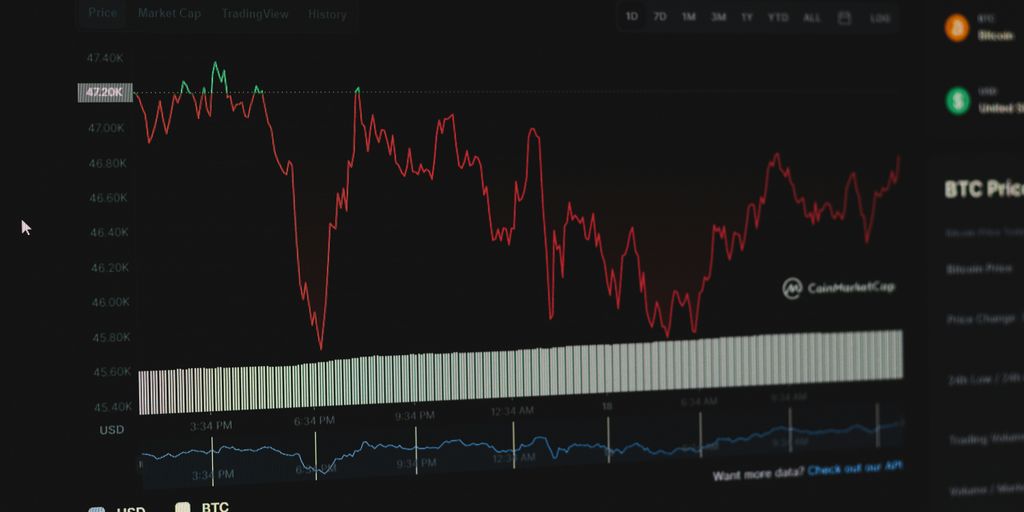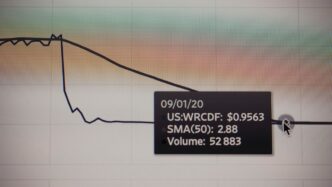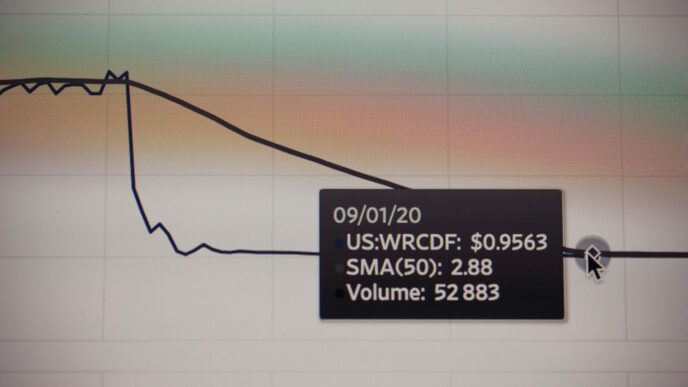The crypto world is buzzing right now. Bitcoin has already smashed through the $100,000 mark, and the market is seeing some serious growth. It feels like a big moment for digital money, with big companies getting involved and governments starting to figure out the rules. This isn’t just a small bump; it looks like the start of something much bigger. We’re going to break down what’s happening, what experts think might happen next, and how you can think about participating in this exciting crypto bull run.
Key Takeaways
- The current crypto bull run began building steam after the April 2024 Bitcoin halving, boosted by institutional interest and favorable economic conditions, pushing Bitcoin past $100,000.
- Experts predict Bitcoin could reach $225,000 by the end of 2025, with the total crypto market cap potentially hitting $10 trillion or more, depending on adoption rates.
- We seem to be in the late optimism phase of the current crypto bull run, not yet at the peak euphoria stage, suggesting there might still be room for growth.
- Key drivers for this crypto bull run include regulatory clarity, the Bitcoin halving event, institutional investment via ETFs, and positive macroeconomic shifts.
- Smart strategies for this period involve finding good entry points during dips, diversifying into promising altcoins like Ethereum or Solana, and always managing risk by not investing more than you can afford to lose.
Understanding the Current Crypto Bull Run
What Constitutes a Crypto Bull Run?
A crypto bull run is basically a period where prices for digital currencies, like Bitcoin and others, go up a lot and keep going up for a while. It’s a time when people get pretty excited about investing because they often see big profits. But, you know, it’s not all smooth sailing. These runs can be really rewarding, but they also come with risks, like prices swinging wildly or suddenly dropping. During these times, more people want to buy than sell, which pushes prices higher. This is usually because of good news, people feeling optimistic, and a general positive vibe in the market. As prices climb, more folks jump in, which then pushes prices up even more. It’s kind of a cycle.
Key Triggers Fueling the 2025 Surge
So, what’s actually causing this big surge we’re seeing now? Well, it’s a mix of things. First off, governments around the world have started to get clearer about how they want to handle crypto. The U.S., for example, has taken a more welcoming approach. Plus, the approval of things like Bitcoin and Ethereum spot ETFs has opened the doors for billions of dollars from big institutions to flow into the market. Remember the Bitcoin halving back in April 2024? That event cut the rate at which new Bitcoins are created, making it scarcer and helping to push prices up. Even the U.S. election results in November 2024 played a part, with many expecting a more crypto-friendly administration. We’re also seeing a lot of growth in the Ethereum network, especially with Layer 2 solutions making transactions faster and cheaper, which is leading to more real-world uses for blockchain technology. It really feels like 2024 was the year everything started clicking into place for this current run.
The Buildup to the Current Market Momentum
It’s tough to pinpoint the exact moment this bull run kicked off. Was it when Bitcoin halved in 2024? Or when those spot ETFs started trading, letting more money in? Maybe it was when the election results came in, sparking hope for a better regulatory future? Or perhaps it was just when everyone started feeling that FOMO (fear of missing out) and prices just kept climbing? The reality is, it wasn’t one single event, but a series of developments that built up to create this momentum. The total crypto market cap has jumped from $1.94 trillion at the end of 2024 to $3.28 trillion now in 2025, showing just how much things have changed. It’s clear that 2024 was the launchpad for this historic run, and the market isn’t showing signs of slowing down. It’s important to remember that while things like technological advancements are key, institutional interest is also a major factor, much like how Padmasree Warrior highlighted the importance of technology trends in various sectors Padmasree Warrior highlights key technology trends.
Expert Bitcoin Price Predictions for 2025
So, what are the big brains in the crypto world saying about Bitcoin’s price for 2025? It’s a question on everyone’s mind, and the predictions are pretty wild, to say the least. We’re seeing a lot of optimism, with many experts pointing to continued institutional adoption and broader market acceptance as key drivers. It feels like we’re past the early, speculative days for Bitcoin, and more serious money is flowing in.
Forecasting Bitcoin’s Trajectory
When you look at the forecasts, there’s a general consensus that Bitcoin is headed up. Some analysts are putting out numbers that sound almost unbelievable, but they’re basing these on historical patterns and the current influx of capital. For instance, some see Bitcoin potentially hitting the $150,000 to $185,000 range by mid-2025. Others are even more bullish, suggesting figures closer to $200,000 or even higher by year’s end. It’s not just about hype; it’s about the actual money coming into the market. We’re seeing Bitcoin dominance strengthen, which usually means the rest of the altcoin market will follow suit after Bitcoin makes its big moves. This pattern has played out before, and many expect 2025 to be no different. It’s a good sign for the overall health of the crypto ecosystem.
Institutional Investment Impact on BTC
Big money is definitely changing the game. The approval of Bitcoin ETFs has opened the floodgates for institutional investors who previously couldn’t or wouldn’t touch crypto. This steady stream of investment is a major factor in the bullish outlook. Think about it: when large funds and corporations start allocating significant portions of their portfolios to Bitcoin, it creates a consistent demand that can push prices higher. This isn’t just a short-term trend; it’s a structural shift in how Bitcoin is viewed by the financial world. It’s moving from a niche asset to a more mainstream investment. This increased institutional interest is a big reason why many are confident about Bitcoin’s price trajectory.
Navigating Bitcoin’s Price Consolidation
Now, it’s not all straight lines up. Even in a bull market, Bitcoin experiences periods of consolidation or pullbacks. These are normal parts of the cycle. Some analysts suggest we might see Bitcoin dip below $102,000 at some point, potentially retracing towards the $60,000 mark before continuing its upward trend. These dips aren’t necessarily bad; they can be healthy corrections that shake out weaker hands and set the stage for the next leg up. Watching technical indicators like the RSI and MACD can help identify these potential entry points during consolidation phases. It’s about being prepared for the ups and downs, not just expecting a constant climb. The market is complex, and understanding these movements is key to making smart decisions.
Broader Market Cap Expectations
So, what’s the big picture for the entire crypto market? We’re talking about the total value of all cryptocurrencies combined, and the numbers being thrown around are pretty wild.
Projected Total Crypto Market Capitalization
Most analysts agree that the total crypto market cap is set for some serious growth. We’re not just talking about Bitcoin here; the whole ecosystem is expected to expand. Think of it like this: if Bitcoin is the engine, then the total market cap is the whole car, including all the passengers and the cargo.
Factors Influencing Market Cap Growth
Several things are pushing this market cap higher. For starters, more and more big companies are getting involved, not just buying Bitcoin but also building services around crypto. This institutional adoption brings a ton of new money and, importantly, a sense of legitimacy that was missing before. Plus, the recent Bitcoin halving event, which cuts the rate at which new Bitcoins are created, is a big deal. Historically, this scarcity has led to price increases, and many expect the same this time around. We’re also seeing clearer rules from governments, which makes big investors feel more comfortable putting their money in.
Bear, Base, and Moon Case Scenarios
Of course, not everyone agrees on the exact numbers, and that’s normal. Here’s a breakdown of what different scenarios look like:
- Bear Case: Even if things go okay, but not spectacularly, the total market cap could hit around $8 trillion by 2026. This assumes steady, but not explosive, growth in adoption.
- Base Case: This is the middle-ground prediction. Most experts are leaning towards a total market cap of about $10 trillion by mid-2026. This scenario factors in continued institutional interest and steady retail participation.
- Moon Case: This is the optimistic outlook. If we see massive adoption from both individuals and institutions, and maybe some unexpected positive developments, the market cap could soar to $14 trillion by late 2026. It’s a big jump, but not impossible in the crypto world. The overall sentiment is overwhelmingly positive, with many expecting the market cap to at least double from its current levels. It’s definitely an exciting time to be watching the space, and you can keep an eye on key metrics like Bitcoin’s price trajectory to gauge the market’s health.
Phases and Duration of the Crypto Bull Run
Figuring out exactly where we are in the current crypto bull run and when it might wrap up is a bit like trying to predict the weather next month – tricky, but not impossible if you look at the patterns. This isn’t just a quick spike; it’s a whole cycle with different stages. We saw the buildup after the April 2024 Bitcoin halving, which really got things moving. Institutional money started pouring in, and suddenly, Bitcoin was breaking records, hitting over $100,000 and even touching $109,354 before settling back a bit. It’s a dynamic situation, and understanding these phases helps us make smarter moves.
Identifying the Current Stage of the Bull Run
Right now, it feels like we’re in the thick of it. Bitcoin has already smashed through the $100,000 mark, which is a huge deal. This isn’t just hype; it’s backed by real institutional interest and a more welcoming regulatory environment. We’re seeing significant trading volumes, and while there might be some price consolidation, the overall trend is still strongly upward. It’s a period where optimism is high, and many new investors are jumping in, often driven by the fear of missing out (FOMO). This phase is characterized by rapid price increases across many digital assets, not just Bitcoin. The total crypto market cap has surged past $3.28 trillion, showing just how much bigger the market has become compared to late 2024.
Historical Bull Run Timelines
Looking back at past cycles gives us some clues. Typically, a bull run kicks off after a Bitcoin halving event, which reduces the new supply of Bitcoin. The current cycle seems to be following this pattern, but it’s also being amplified by factors like the approval of spot Bitcoin and Ethereum ETFs. These events opened the doors for billions in institutional investment, something we didn’t see to this extent in previous runs. Historically, bull runs can last anywhere from several months to over a year, often peaking a few months after the halving. For instance, the 2017 bull run had a distinct peak, and the 2021 run had its own trajectory. This time, analysts are pointing towards a potential peak between April and May 2025, though some think it could stretch into 2026, especially with continued institutional involvement. It’s important to remember that these timelines are just estimates, and external factors can always shift the schedule.
Potential Endpoints for the 2025 Cycle
So, when might this party end? Predicting the exact top is notoriously difficult. However, we can look for warning signs. These often include extreme euphoria in the market, where everyone is talking about crypto and expecting prices to go up forever. Technical indicators, like reaching certain price targets or breaking key support levels after a long uptrend, can also signal a potential shift. Regulatory changes, even positive ones, can sometimes mark a turning point if they lead to profit-taking. Some experts suggest that the cycle might extend into 2026, influenced by ongoing macroeconomic conditions and the sustained inflow of institutional capital. It’s wise to have a plan for taking profits gradually rather than trying to time the absolute peak. Building a solid position and having predetermined exit strategies, perhaps based on reaching certain price milestones or specific market sentiment indicators, is a much safer approach than trying to catch every last dollar. Remember, the goal is to capture a good chunk of the upside while protecting your capital from the inevitable downturns. You can find more information on market trends and strategies at the Oculus Rift launch.
Strategic Approaches for the Bull Market
Alright, so the market’s looking pretty good, right? But just because things are going up doesn’t mean you should just throw money at everything. We need a plan. Smart investing means knowing when to get in and when to take some profits. It’s not just about buying low and selling high; it’s about doing it with a bit of thought.
Smart Entry Points and Position Building
Finding the right time to buy is tricky. You don’t want to buy at the absolute peak, but you also don’t want to miss out on the early gains. Look for dips or periods of consolidation. These are often good times to build your position. Think about dollar-cost averaging – putting a set amount of money in at regular intervals, regardless of the price. This helps smooth out your average buy price. It’s a solid way to build up your holdings without trying to time the market perfectly. Many investors are looking at assets like Ethereum (ETH) as a key part of their strategy.
Diversifying into Promising Altcoins
Bitcoin is great, but it’s not the only game in town. There are tons of other coins, called altcoins, that could see big gains. But how do you pick them? Don’t just chase the ones everyone’s talking about on social media. Do some homework. Look for projects that have real use cases, strong development teams, and active communities. A good starting point is to look at coins with solid tech that are solving actual problems. Spreading your investment across a few different altcoins can also help manage risk.
Risk Management During Volatile Periods
Crypto is known for its wild swings. Even in a bull market, prices can drop fast. So, you need to protect yourself. Set stop-loss orders – these automatically sell your crypto if it drops to a certain price, limiting your losses. Also, don’t put all your eggs in one basket. Diversification across different types of crypto assets is key. And importantly, only invest what you can afford to lose. It sounds simple, but sticking to this rule is probably the most important part of managing risk in this space. Remember, even during a bull run, there are warning signs to watch out for.
Key Factors Driving Market Momentum
So, what’s actually pushing the crypto market forward right now? It’s not just one thing, but a mix of big shifts that are making a real difference. Think of it like a car needing several parts to run smoothly – you need the engine, the fuel, and a clear road.
Regulatory Clarity and Institutional Adoption
One of the biggest changes we’re seeing is that governments and financial bodies are starting to get a handle on crypto. This means clearer rules, which is a huge deal. Before, it was kind of a wild west, and that made big companies and serious investors nervous. Now, with more defined regulations, we’re seeing major players like BlackRock getting involved, launching things like Bitcoin ETFs. This isn’t just about one company; it signals that the whole financial world is starting to take digital assets seriously. This increased acceptance is a major reason why the market has been so strong lately, and it’s expected to continue driving growth.
The Impact of Bitcoin Halving Events
You’ve probably heard about the Bitcoin halving. Basically, it’s a programmed event that cuts the reward for mining new bitcoins in half. This happens roughly every four years. The most recent one was in April 2024. What this does is make new bitcoins scarcer. When demand stays high or even increases, and the supply of new coins goes down, basic economics tells us the price should go up. This scarcity effect has historically been a big catalyst for bull runs, and it seems to be playing a role again this time around.
Macroeconomic Influences on Crypto
It’s not just crypto-specific news. What’s happening in the wider economy matters a lot too. Things like interest rates set by central banks and the overall amount of money circulating in the economy (sometimes called M2 money supply) can really affect crypto prices. When there’s more money flowing around, or when interest rates are low, people often look for places to invest that might offer higher returns, and crypto can be one of those places. Conversely, if the economy tightens up, that can put pressure on riskier assets like crypto. So, keeping an eye on global economic trends is pretty important for understanding where crypto prices might go.
Identifying High-Potential Altcoins
Alright, so we’ve talked about the big picture, Bitcoin, and market caps. Now, let’s get into the nitty-gritty of finding those altcoins that could really make some noise in the next bull run. It’s not just about chasing the latest shiny coin, though. We need to be smart about this.
Altcoins Poised for Growth
When we’re looking for altcoins that have potential, we’re really trying to spot those that are building something useful. Think about projects that solve real problems or offer new tech that people actually want to use. It’s easy to get caught up in the hype, but solid utility is what usually keeps a project going when things get choppy. We’re seeing a lot of interest in projects that are improving blockchain infrastructure, making transactions faster and cheaper, or creating new ways to interact with decentralized applications. The key is to look for projects with a clear use case and a growing community.
Technological Advancements in Altcoins
Technology is moving fast in crypto. We’re not just talking about faster transaction speeds anymore. There are advancements in areas like zero-knowledge proofs, which can boost privacy and scalability, and new consensus mechanisms that are more energy-efficient. Some projects are also making strides in interoperability, meaning different blockchains can talk to each other more easily. This could really open up new possibilities for how we use crypto. It’s worth keeping an eye on projects that are pushing these boundaries, as they might be the ones leading the next wave of innovation. You can check out some of the latest developments on platforms like the Apple store for new tech announcements.
Evaluating Altcoin Fundamentals
So, how do you actually figure out if an altcoin is a good bet? It’s a bit like looking at a company’s stock, but with its own crypto twist. You want to see a strong team behind the project, people who know what they’re doing and have a track record. Then there’s the tokenomics – how the coin itself works, its supply, how it’s distributed, and what its purpose is within the project. Is it used for fees, for staking, or something else? We also need to look at adoption. Are people actually using the network? What’s the developer activity like? Are new features being added regularly? A project with a healthy ecosystem and active development is usually a good sign. It’s also smart to look at how the project is positioned relative to its competitors and what its long-term vision is. Don’t just look at the price chart; dig into what makes the project tick.
Wrapping Up the Crypto Surge
So, we’ve looked at what’s driving this crypto boom and where things might be headed. It’s clear that 2025 is shaping up to be a big year, with many expecting prices to keep climbing, maybe even reaching new highs. Remember, though, that the crypto world moves fast. What looks good today might change tomorrow. It’s smart to keep an eye on how things are going, maybe spread your investments around a bit, and importantly, only put in money you’re okay with losing. This whole market is still pretty wild, and while the potential for big gains is there, so is the chance for big drops. Stay informed, stay cautious, and good luck out there.
Frequently Asked Questions
What exactly is a crypto bull run?
A crypto bull run is a time when the prices of digital money, like Bitcoin, go up a lot and keep going up for a while. It’s exciting because people can make good money, but prices can also drop suddenly, so it’s important to be careful.
What makes a crypto bull run happen?
Several things can start a crypto bull run. Big news like governments making clearer rules for crypto, big companies buying lots of crypto, and events like the Bitcoin ‘halving’ (which makes new Bitcoin rarer) can all help push prices up. When prices start rising, more people want to buy, which makes prices go up even more.
How high do experts think Bitcoin will go in 2025?
Experts think Bitcoin could reach anywhere from $100,000 to over $200,000 by the end of 2025. This is because more big companies are investing in it, and new rules might make it easier for people to buy and sell crypto.
How much could the whole crypto market be worth?
The total value of all cryptocurrencies might grow a lot. Some think it could reach $8 trillion, others $10 trillion, and in the best-case scenario, even $14 trillion by 2026. This depends on how many people and companies start using crypto.
What stage are we in for the 2025 crypto bull run?
We’re likely in the middle or late part of the current bull run. It started building up after the Bitcoin halving in 2024. While prices are high, they haven’t reached the super-excited, ‘everyone’s buying’ stage yet, which usually happens near the end.
What are some good tips for investing during a bull run?
It’s smart to start buying when prices dip a bit, rather than when they’re at their highest. Also, don’t put all your money into just one type of crypto; spread it out among different promising ones. Always remember to only invest money you can afford to lose because crypto can be very unpredictable.














